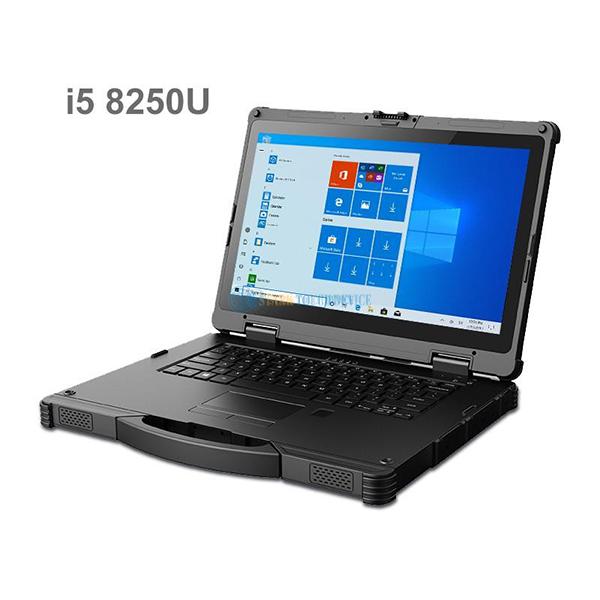Welcome STARK TOUCH DEVICE!
Solutions
Tips for switching between multiple network segments of industrial control computers
Industrial Control Computer Hard Drive Health Monitoring: Strategies and Best Practices
Industrial control computers (ICCs) rely on hard drives to store critical operational data, firmware, and historical logs. Monitoring disk health proactively prevents unexpected failures that could disrupt manufacturing processes, energy distribution, or automation systems. This guide explores techniques for assessing and maintaining hard drive reliability in industrial environments.

Utilizing S.M.A.R.T. Attributes for Predictive Maintenance
Self-Monitoring, Analysis, and Reporting Technology (S.M.A.R.T.) is a built-in framework in most hard drives that tracks performance metrics to predict failures. Industrial operators can leverage these attributes to schedule maintenance before catastrophic breakdowns occur.
Key S.M.A.R.T. Metrics to Monitor
Reallocated Sectors Count: Indicates the number of bad sectors the drive has remapped. A rising count signals deteriorating disk surfaces.
Spin-Up Time: Measures the time taken for the drive to reach operational speed. Delays may point to motor or bearing issues.
Current Pending Sector Count: Tracks sectors marked as "pending" for reallocation. Persistent high values suggest imminent failure.
Uncorrectable Sector Count: Counts sectors that cannot be read despite retries. A non-zero value often precedes drive collapse.
Example: An ICC storing real-time sensor data might flag a drive with a "Reallocated Sectors Count" exceeding 100, prompting replacement before data corruption occurs.
Tools for S.M.A.R.T. Data Collection
Command-Line Utilities: Use
smartctl(part ofsmartmontools) on Linux or Windows to extract raw S.M.A.R.T. data.Command:
smartctl -a /dev/sda(Linux) orsmartctl -a \\.\PhysicalDrive0(Windows).Graphical Interfaces: Some industrial operating systems include native disk health monitors displaying S.M.A.R.T. metrics in real time.
Practical Tip: Schedule daily S.M.A.R.T. checks via cron jobs (Linux) or Task Scheduler (Windows) to log trends over time.
Interpreting S.M.A.R.T. Thresholds
Each S.M.A.R.T. attribute has a "worst" and "threshold" value. When the "worst" value falls below the threshold, the drive is at risk.
Pre-Failure Thresholds: Attributes like "Reallocated Sectors" often have thresholds of 0. Any non-zero value requires attention.
Performance Thresholds: Metrics like "Spin-Up Time" may have higher thresholds (e.g., 500ms), with deviations indicating mechanical stress.
Scenario: A drive with a "Current Pending Sector Count" of 50 and a threshold of 0 should be replaced immediately, even if it operates temporarily.
Implementing Real-Time Disk Activity and Temperature Monitoring
Beyond S.M.A.R.T., tracking disk activity and temperature provides insights into operational stress and environmental risks.
Disk Activity Analysis
I/O Operations per Second (IOPS): High IOPS in industrial databases or log servers may indicate excessive read/write cycles, accelerating wear.
Queue Length: A consistently long queue suggests the drive struggles to keep up with demand, risking timeouts in real-time systems.
Tools: Use iostat (Linux) or Performance Monitor (Windows) to track IOPS and queue lengths.
Temperature Monitoring
Operating Range: Industrial hard drives typically tolerate 0°C to 60°C, but prolonged exposure to high temperatures (above 50°C) degrades lifespan.
Thermal Throttling: Drives may reduce performance to cool down. Monitor for sudden drops in throughput.
Implementation:
Deploy temperature sensors near drives in enclosures.
Use
hddtemp(Linux) or third-party utilities to log temperatures.
Case Study: A power plant’s ICCs experienced frequent disk failures until temperature logs revealed enclosures exceeded 55°C. Adding cooling fans reduced failures by 70%.
Log Analysis for Anomalies and Failure Patterns
System and application logs often contain early warning signs of disk degradation. Analyzing these logs helps identify subtle issues before S.M.A.R.T. thresholds trigger.
Common Log Indicators
Read/Write Errors: Frequent "I/O error" or "disk read error" entries in system logs suggest surface damage or controller issues.
Timeout Events: Logs showing "device timeout" or "SCSI command aborted" may indicate mechanical failures or cable problems.
Firmware Warnings: Some drives log firmware-detected issues, such as "head instability" or "calibration failures."
Example: An ICC’s /var/log/messages (Linux) might repeatedly log "sd 0:0:0:0: [sda] Unhandled sense code" along with S.M.A.R.T. errors, confirming a failing drive.
Automated Log Parsing
Scripting: Write scripts to filter logs for disk-related keywords (e.g., "error," "timeout," "bad block").
Log Management Tools: Use tools like ELK Stack (Elasticsearch, Logstash, Kibana) to visualize disk error trends over time.
Practical Application: A factory’s ICC cluster uses a Python script to email alerts when logs contain "uncorrectable sector" more than three times in an hour.
Environmental and Physical Checks
Industrial settings expose hard drives to vibrations, dust, and temperature swings. Regular physical inspections complement digital monitoring.
Vibration and Shock Resistance
Mounting Stability: Ensure drives are securely mounted in shock-absorbing trays to prevent head crashes from vibrations.
Location: Avoid placing drives near motors or compressors that generate frequent shocks.
Test: Use a vibration meter to measure acceleration levels (in g-forces) near drive enclosures.
Dust and Contamination Control
Sealed Enclosures: Use IP-rated cabinets to prevent dust ingress, which can clog cooling vents or scratch disk platters.
Cleaning Schedules: Wipe down enclosures and vents monthly to remove accumulated debris.
Visual Inspection: Check for dust buildup on drive labels or vent grills during routine maintenance.
By integrating these monitoring techniques, industrial operators can extend hard drive lifespans, reduce unplanned downtime, and safeguard critical automation data.


